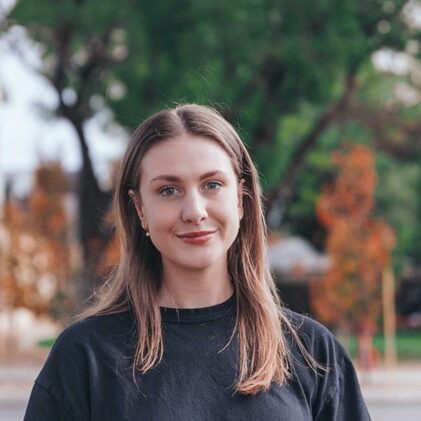Reading time: 3 minutes
For PhD students, the opportunity to step beyond the university’s walls and collaborate with industry is a game-changer. Melissa, a current PhD candidate in the Curtin Medical School, recently completed an internship with The Sherpah Clinic, a dynamic health innovation company, and her experience highlights the immense value such partnerships offer to students, their supervisors and industry hosts.
Melissa’s doctoral project explores the use of blood-based biomarkers and diffusion MRI to examine changes in brain white matter following mild traumatic brain injury. She hopes to improve our understanding of how these subtle changes relate to post-concussive symptoms and recovery. But it was through her industry internship that she discovered a whole new dimension to her research and professional growth.
“I had previously worked with Sherpah on a casual basis,” Melissa explains. “My supervisor, Lindy, suggested I reach out and see if there were formal internship opportunities. Curtin was really supportive, even though Sherpah wasn’t one of the usual partners. They made the whole process simple and easy.”
Melissa’s internship began with a literature review on autonomic dysfunction in major depressive disorder and the use of repetitive transcranial magnetic stimulation (rTMS) as a treatment. This set the stage for her to collaborate closely with a multidisciplinary team of clinical psychiatrists and researchers. Together, they developed a research plan, discussed methodologies, analysed data, and presented findings to clinicians and allied health professionals at Fremantle Hospital.
“One of the highlights was being selected to write and present our abstract at the Clinical TMS Society Annual Meeting in London, and most recently presenting my PhD research at the International Society for Magnetic Resonance in Medicine Conference in Hawaii, where I was awarded a Summa cum Laude merit award,” Melissa says. “Presenting to international experts and connecting with clinicians really expanded my professional network and fuelled my passion for research in this field.”
The internship’s flexible structure allowed Melissa to balance her PhD progress with real-world research experience. “Some weeks I worked two to three days on the internship, other weeks I focused on my PhD. This flexibility was crucial,” she notes.
Melissa credits her supervisors for their encouragement and guidance. “I’m fortunate to have incredibly supportive supervisors. Dr Sarah Hellewell, for example, helped me with data analysis and my poster presentation.”
Perhaps most importantly, Melissa’s internship gave her a new perspective on career options after her PhD. “It’s given me the confidence to see that moving into industry doesn’t mean leaving academia behind. There’s real scope to keep contributing to scientific research in an industry role,” she reflects. “Ideally, I’d like to keep one foot in academia and the other in industry. The two worlds have so much to offer each other.”
Melissa also emphasised the business and communication skills she developed by working in a former start-up environment. “Sherpah’s multidisciplinary approach is crucial for innovation. They actively engage with patients, clinicians, policymakers, and researchers. Being involved in that process has broadened my skill set in ways a university lab alone couldn’t.”
Her advice to fellow PhD students? “I would strongly recommend an internship. You spend years studying a topic so intensely—it can give you tunnel vision. An internship forces you to see things from another perspective and pick up essential skills like business acumen and communication that aren’t often part of traditional PhD training.”
Melissa’s journey with Sherpah is a shining example of the power of industry collaboration within doctoral study. As universities and supervisors seek to equip students for a changing research landscape, partnerships like these are not just beneficial—they’re essential.

Melissa Papini
Melissa is a PhD candidate supervised by Dr Sarah Hellewell and Professor Melinda Fitzgerald. Her research focuses on concussion, investigating novel blood and neuroimaging biomarkers that can aid our understanding of white matter damage after injury and how this relates to recovery.



